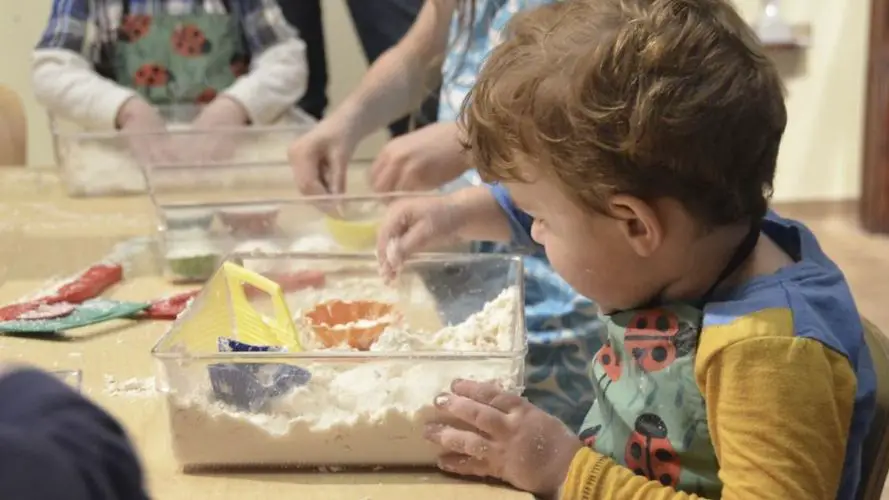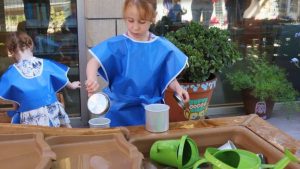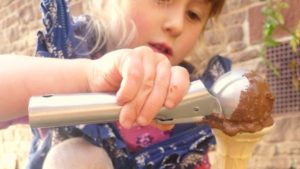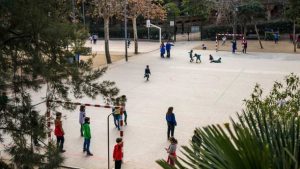Our senses are the primary way that we relate to the world around us, and an important part of early childhood happens when we naturally begin to understand and integrate with our senses, learning to manage sensory input. Child psychologists now have a better understanding of the role that sensory processing and integration have in child development – they understand that not all children are able to respond to sensory stimulus in the same way, but that most will benefit from targeted sensory engagement.
6 benefits of sensory play
1. It taps into their primal nature
Nothing is more natural to kids than feeling, tasting and smelling objects in an attempt to suss out what they are and what role they might play in their lives. It’s how children perceive everything during their early development – they can neither ask for nor understand an explanation, so they’re literally feeling their way through life. Sensory play taps into their natural inclination to explore the world through their senses. It engages with them in a way they understand and familiarizes them with sensations in a controlled setting in which they feel secure.
2. It benefits people with autism and sensory processing disorder
This isn’t just true for children. When a person of any age struggles with certain sensory stimuli, having a controlled environment where they feel safe to practice limited exposure can be a therapeutic way to overcome extreme reactions that are very unpleasant for the person experiencing them. These reactions can be difficult for parents to handle because of their intensity and can sometimes limit social situations for an affected person, and safe exposure therapy can help to minimize their severity.
3. It helps children move beyond the sense of touch
While children often think of things in terms of how they feel in their hands, introducing them to the concept of perceiving things primarily through other senses can help them hone focus in those areas. Encouraging them to focus solely on a taste or a smell can help them to disconnect from the tactile and improve sensory awareness.
4. They’ll find new ways to describe things
Whether the sandpaper was ‘grainy’, the slime was ‘gloppy’ or the fabric was ‘velvety’, exploring the senses opens kids up to a whole new world of descriptive words, benefiting their language development. They’ll learn lots of new adjectives to come up with things they touch, see, hear, smell and taste, and they’ll probably make up a couple funny ones of their own along the way.
5. They’ll improve their small motor skills
A lot of sensory play experiences involve kids interacting with small objects – grabbing a pinch or a fistful of something, pouring liquids between two objects, or other acts that focus on the use of their hands. Those actions require small motor control, and repeated focused motions that demand it are developmentally beneficial to kids, improving their coordination, strength and handwriting/small tool handling.
6. They’ll diffuse some tension
Whether it’s loud, raucous and extremely physical or quiet, soothing and gentle, sensory play can help children to soothe emotional upsets and tension they’re not sure how to verbalize. From time to time, we all struggle with feeling angry or overwhelmed and aren’t able to handle any more negative sensory input. The kind of stimulus that works varies by kid – just like some adults like aromatherapy and others de-stress by kickboxing, some kids achieve calm through hectic sensory stimulation while others require something more subtle.
Easy sensory play activities
Sensory play doesn’t have to require special toys or expensive purchases – in fact, there’s a lot of ways to encourage it with items and fixtures you already have on hand. Here are a few ways to facilitate sensory play for your kiddos without making your wallet sad.
Ice orbs
You’ll need:
- balloons
- water
- small plastic toys
These are as easy to make as placing a toy inside each balloon, filling the rounded portion with water so that it will freeze in an orb shape. Once the water has frozen, simply invert the balloon from its opening and remove the orb, letting kids explore and discover. Try matching games – they’ll love discovering ways to melt the orb faster and retrieve their toy.
Colorful rice
You’ll need:
- 3 cups rice
- 3 tsp different food colorings
- 3 lidded jars
- baking sheets covered in paper towels
Add one cup of rice and one teaspoon of food color to each jar, lid and shake thoroughly. Pour the contents out onto a baking sheet lined with paper towels, and allow to dry. Clean the jars thoroughly, drying them. When the rice is dry, store in dry jars, shaking to break up clumps.






